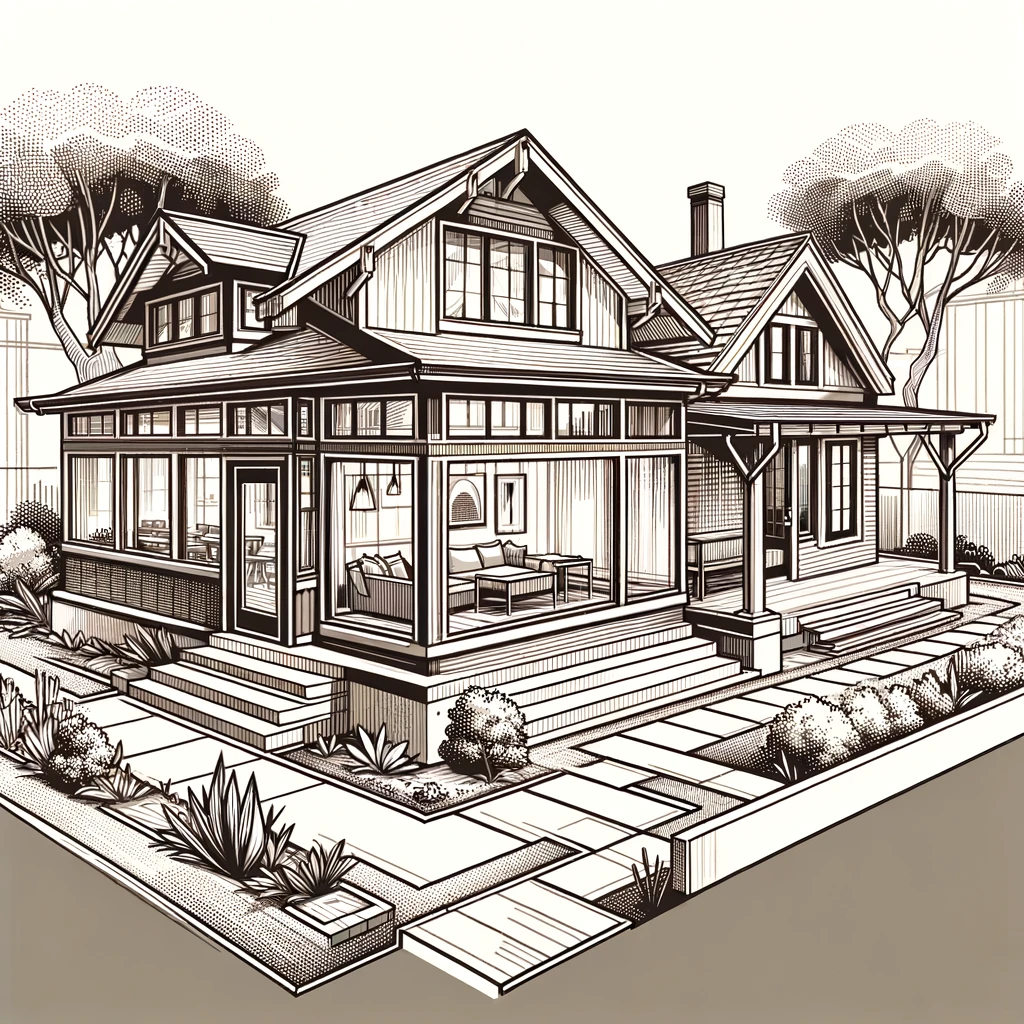Attached ADU regulations are regulations that are placed on Accessory Dwelling Units (ADUS) that are attached to the primary residence.
These include things like size, dwelling requirements, and much more.
They can be a bit hard to get your head around, especially as they change depending on the area, which is why we decided to create this guide.
Let’s waste no more time.
What Is An Attached ADU?
An Attached Accessory Dwelling Unit (ADU) is simply an ADU that shares at least one wall with the main residence.
Unlike detached ADUs, attached units often use existing utilities, reducing construction costs.
They offer flexibility for homeowners, whether for rental income, multi-generational living, or simply additional space.
However, attached ADUs are subject to strict regulations that govern their size, location, and utility connections.
These regulations are essential to ensuring the safety, legality, and proper functionality of the unit.
What Are Attached ADU Regulations?
Attached ADU regulations set guidelines for the design, size, and placement of ADUs that are attached to the primary residence.
Generally, these units are limited in size, often capped at 50% of the square footage of the main residence.
They must adhere to setback rules, meaning the ADU needs to be a specific distance from property boundaries, streets, or neighboring structures.
Local building codes also often require that ADUs meet certain fire safety standards, which can vary from the basics like sprinkler systems to alternative exits.
Zoning and Size Restrictions
Zoning laws are a key factor in whether you can actually build an attached ADU on your property in the first place.
In the majority of cases, you’re looking at a 50% maximum size compared to the square footage of the main house or residence.
Setback regs are also another thing to consider, and these basically tell you how far the attached ADU can be from other properties – these are put in place to protect privacy and access.
Utility and Fire Safety Regulations
Attached ADUs usually share utility meters with the primary residence in most scenarios, however if the unit is used for rental purposes a separate meter can sometimes be installed.
Electrical, plumbing, and ventilation systems must meet specific building codes to ensure safety and functionality.
Fire safety is a crucial aspect of ADU construction, and many areas require fire-rated walls and adequate escape routes.
In some regions, especially those prone to wildfires, ADUs may need to be outfitted with sprinkler systems to meet fire safety standards.
How Attached ADU Regulations Vary by Location
ADU regulations are not one-size-fits-all; they vary significantly depending on where you live.
For example, in Texas, regulations differ from city to city, with places like Austin and Houston imposing their own rules on ADU size, setbacks, and utility requirements.
In California, there is still variance between cities, but there are also ever-changing ADU laws in place to encourage housing development.
However, each municipality may still add its own guidelines regarding parking, fire safety, and lot coverage, which is why location can play such a huge role in an attached ADU project.
Always consult with a professional who has experience in your area with attached ADU construction to get the most accurate details, as these can be changing al the time.
Permits and Compliance
Before any construction can begin, securing permits is a must.
Permits require a LOT of information, from site plans to utility details and much more.
In Texas, permit requirements vary, but most cities will require you to provide architectural drawings and site surveys to verify that the ADU complies with zoning laws and safety standards.
Working with a licensed contractor or architect ensures that your ADU plans meet local regulations, speeding up the approval process and minimizing costly mistakes.
So That’s It
Attached ADUs are an incredible way to add more space to your property that can be used for many different purposes.
When it comes to actually building an attached ADU, you should always speak to a professional for the most accurate advice in your area, so you can get your project approved and built quickly.
